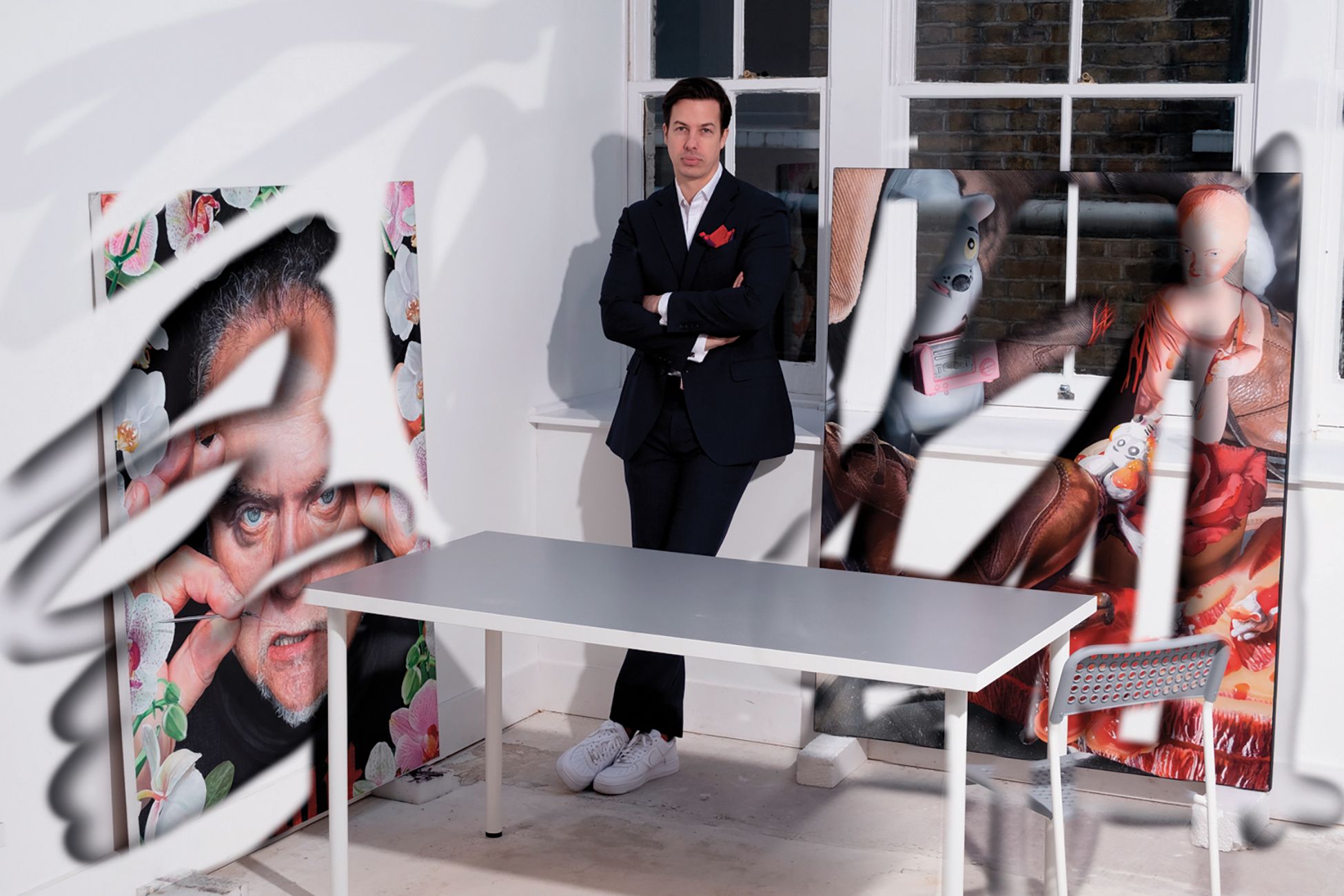Dávid Kováts, the co-founder of Budapest’s Dobossy Auction House, opened a gallery in London in December 2020, right in the middle of the coronavirus epidemic. The venue highlights contemporary Hungarian artists. Lili Farkas-Zentai talked to Dávid about the beginning, the artists he represents, the changes in the art market, and his plans for this year.This interview was published in print in Hype&Hyper 2021/1.
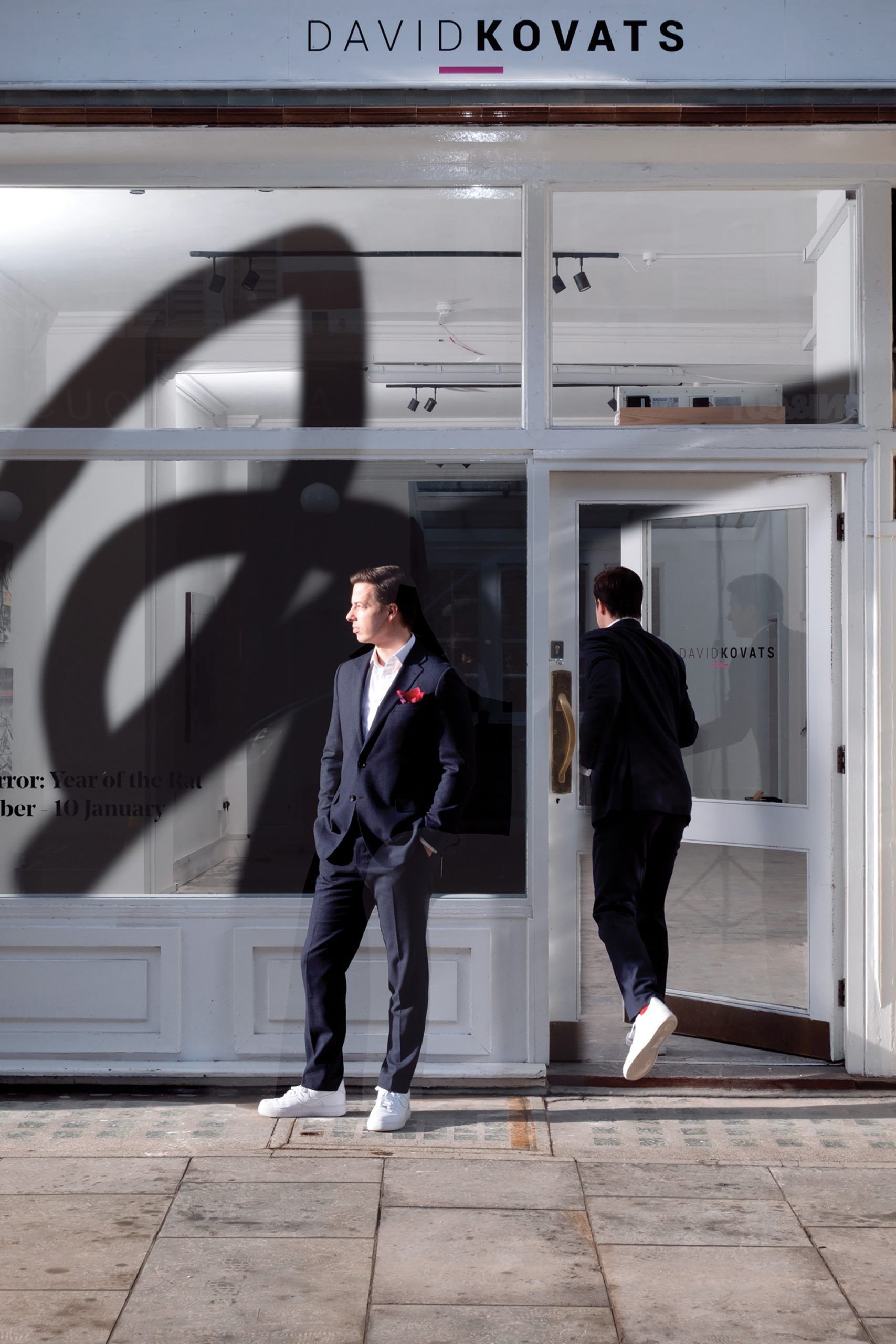
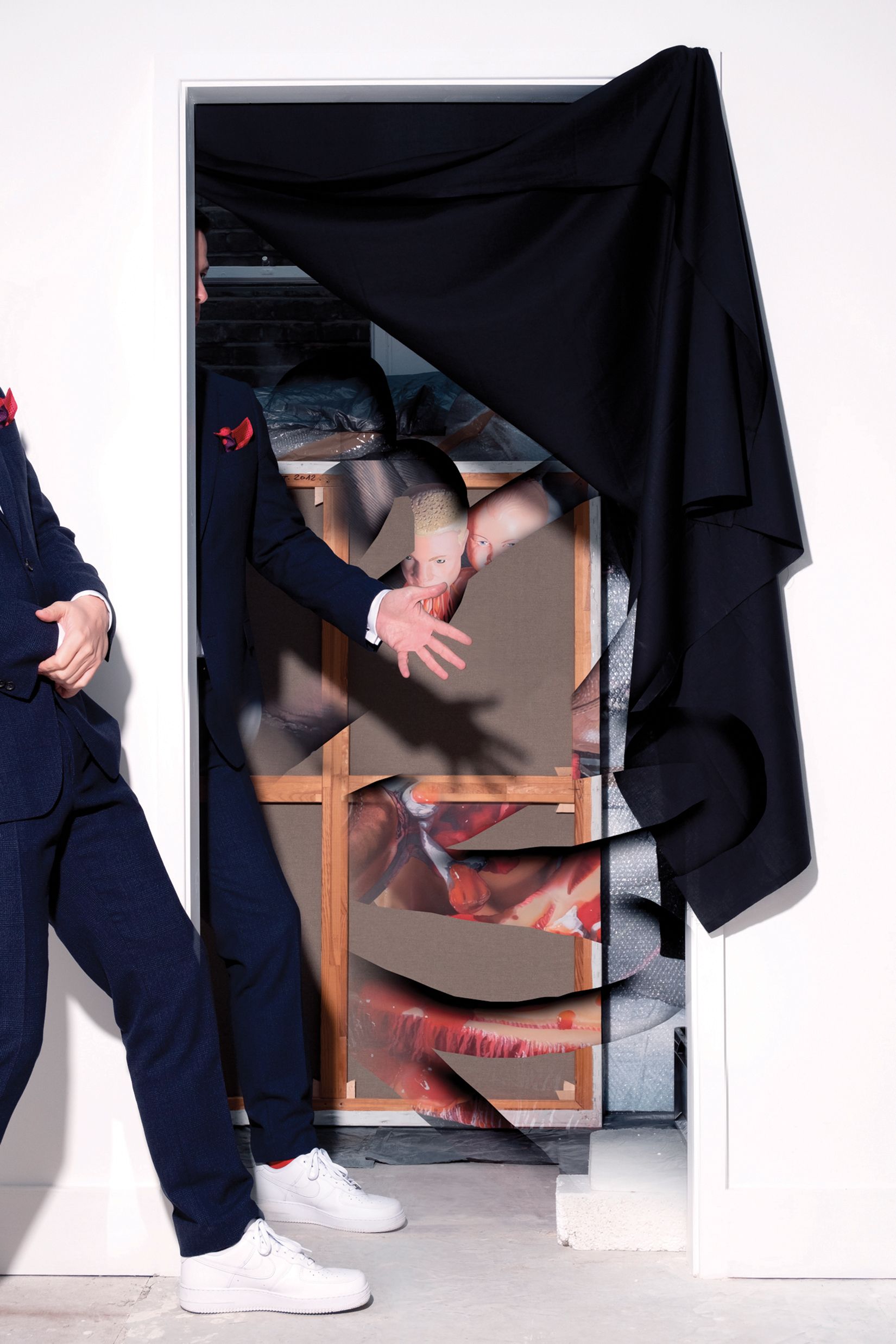
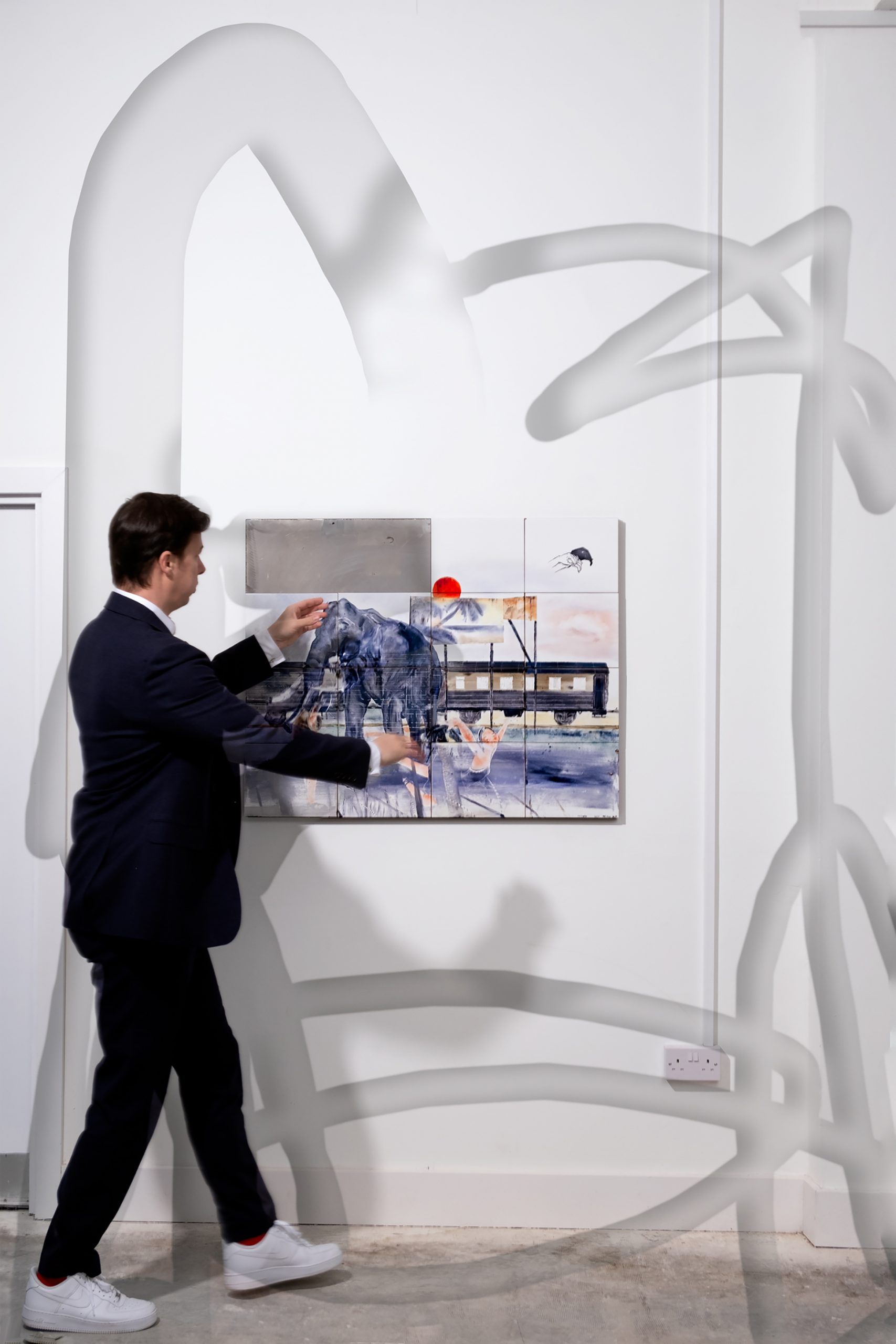
Interview by Lili Farkas-Zentai
You pursued your studies in the British capital and then worked at Sotheby’s London for years. Then in 2019, you decided to hold one of the auctions of Dobossy, the auction house you founded with your sister, in London. Back then, did you know that a year later you would open a gallery of your own in the vicinity of Covent Garden?
When I moved to London in 2009, I almost immediately felt like I had a place here. I knew I could achieve anything here, and it was only up to me how far I would get. Later I moved back to Budapest, but my mind was still stuck in London – when I closed my eyes, I could see the city before me. So deep down I kind of knew I’d come back. We founded Dobossy to be able to bring Hungarian art to the international market, to begin with. Our auction in London was the first step in this endeavor, which turned out to be very successful. However, Nóri and I were sure we would only be able to move forward significantly if we established a permanent presence in the British capital. And from here, the idea of founding a gallery was just a few steps away.
And you ended up doing it during a pandemic – what gave you the motivation to take the plunge and realize your ideas despite all the difficulties in this challenging situation?
After our auction in London, I started making arrangements almost immediately. By the time the pandemic took on alarming proportions, I had already set so many things in motion that, on the one hand, it would have been foolish to let it all go to waste, and on the other hand, I felt like the only way out of the situation was to go ahead. I knew I could only keep my head clear during this period of time if I had goals and I would do my best to reach them. Of course, there are people who think that my decision is reckless, and others say it’s brave – we’ll see who was right when I look back on these days in the future. Despite the various difficulties, I still have a positive outlook on the situation.
Similarly to the Dobossy Auction House, the David Kovats Gallery focuses on the works of contemporary Hungarian artists. What made you sure this would work: your experience with auctions in London, or your own mission?
The fact that the artists are Hungarian is not necessarily a value in itself, but I could also put it this way: no one cares about this. What really matters is quality. I think I have selected and will be showcasing artists who will stand their ground on the international market. Regardless, I’m very proud of us being Hungarian, of course. In fact, it’s clearly a motivating factor to be able to show the world how fantastic artists we have – but this is not necessarily what makes it work. Beside quality, the other fundamental factor is my person. This line of business is very much rooted in personal relations, and as strange as this might sound, decent works of art wouldn’t do the job alone; I have to make them into a success.
How do you see the contemporary art market, the artists and their work in Hungary, and with a broader focus, in Central and Eastern Europe? Is it possible to detect – either in their themes or their style – a shared identity, a collective past?
Of course, but these lines are starting to blur a little in today’s world. The Eastern Bloc is no longer an isolated, detached part of the world. Thanks to the Internet, there are many influences that affect artists’ way of thinking, taste, and mindset and can even make them fully international. Besides the fact that
identity is crucial, artists can live anywhere, the important thing is that they are original and self-identical – this is what gives them genuine strength.
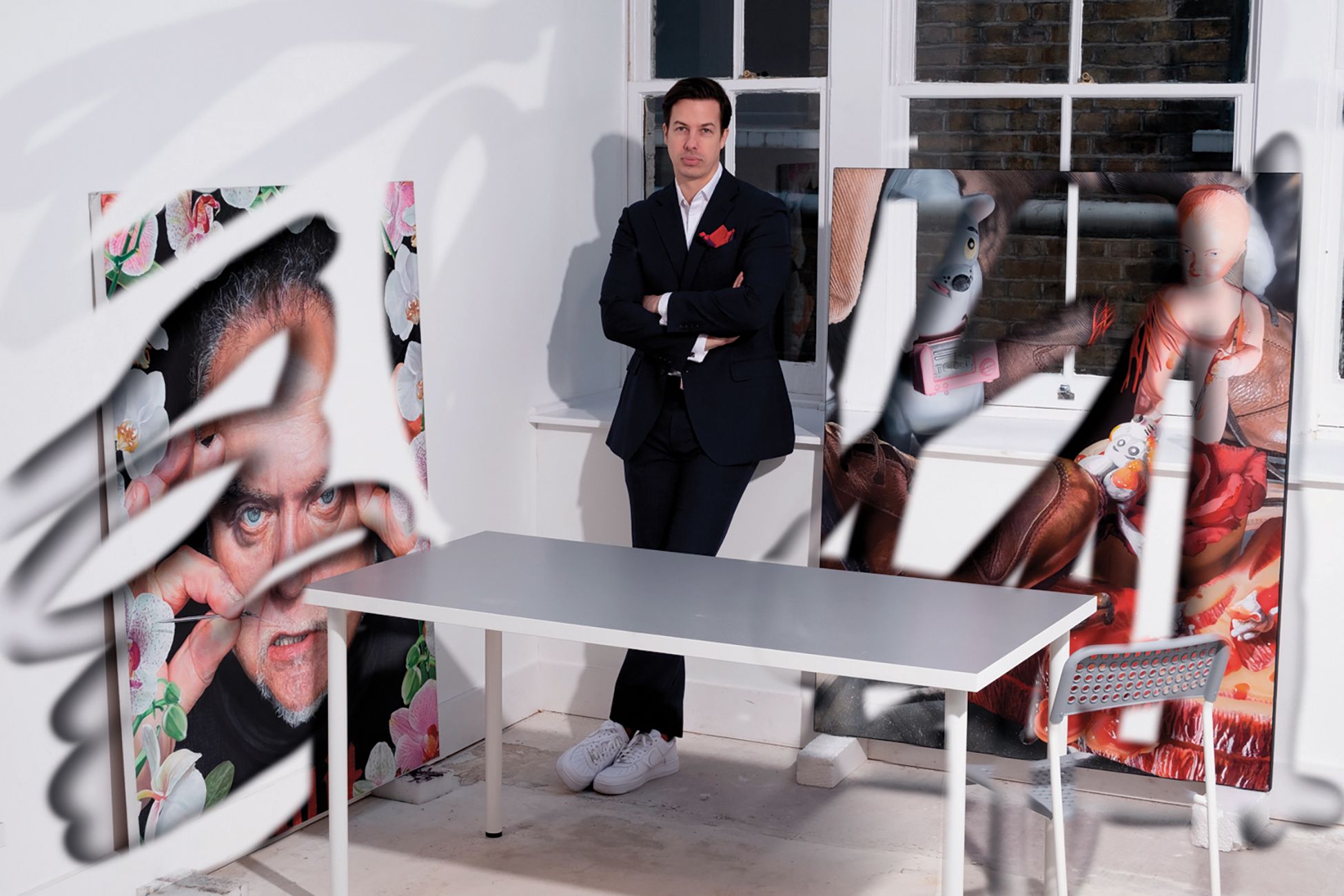
The first exhibition of the David Kováts Gallery, opened right before the total lockdown, featured the works of Horror Pista. His visual world and technique are both interesting – he paints on tiles. I presume the process of delivery and installation here was a bit of a challenge. Why did you choose Pista’s tiles to open the gallery?
During the installation process, the tiles were fixed on iron sheets, from which they can be removed easily. This is also necessary because, if someone buys it and wants to use it as a tile in their home, this method makes the pieces easier to transport, as they can be simply put in a box. It’s a bit like putting together a contemporary puzzle. In the end, I chose his work for the gallery opening exhibition, because I wanted to start with something non-ordinary, something that would grab the attention of the media. Lucky for us, it worked.
London is the center of the European art trade, where, I’d assume, it’s not easy to prevail as a small Hungarian-owned gallery. How can you or how is it possible to “surprise” the public despite this?
Besides the numerous benefits, it’s an obvious difficulty that it’s extremely difficult to stand out in such a market. I am confident that we will continue to be able to organize exhibitions and showcase artists that feel fresh even in London.
As a gallery, you have resident artists who you represent, and whose work can more or less tell us what styles are in your main focus. To what extent do you plan to expand this circle in the future with other, non-Hungarian artists from the region? If only for the fact that no other gallery in the area has set foot in London so far.
First things first, I’d like to showcase a very strong group of Hungarian artists, but my future plans include expanding this to represent artists from other countries in the region as well.
What do you think of the impact of the coronavirus pandemic and the inseparable online expansion on the art market?
To the auction market, regardless of the total turnover decreasing statistically, the epidemic brought numerous positive changes. Online sales have broken down barriers that even the biggest players have failed to do before. But galleries are in a more stressful position, because art fairs, their main sales channel, were canceled. Of course, galleries have also switched to online tools, but the results were not as striking as they were for auction houses. I think by the time the restrictions are lifted, people will surely be hungry for culture – they will want to go to exhibitions and openings. This was already noticeable in early December, during the short period when we could open the gallery.
Amid the prolonged London lockdown, how were you able to continue work in the gallery? Lately, you have also shared more video content online, for example. How can this be done well?
Unfortunately, I don’t have the secret formula, but what I’m trying to do is providing my followers with original and engaging content. This is especially challenging for my gallery since, as a matter of fact, I’m working on introducing unknown artists to an international audience. But the challenge inherent to this process is what makes it all really exciting.
After Horror Pista, your gallery will display the works of István Nyári. What else are you planning for 2021?
We will definitely put together the joint exhibition of Gergő Kovách and Petra Combarro this year, and we have ongoing negotiations with other artists, too. I hope that our entire schedule for 2021 will be ready to be made public quite soon.
David Kovats Gallery Web | Facebook | Instagram

Prefer to read it in print? Order the first issue of Hype&Hyper magazine from our online Store!
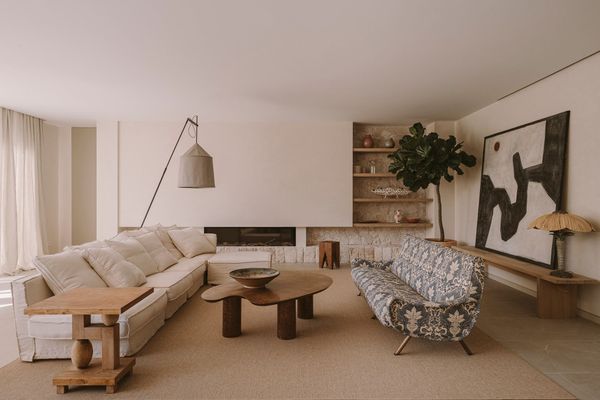
Summer dream villa in Mallorca
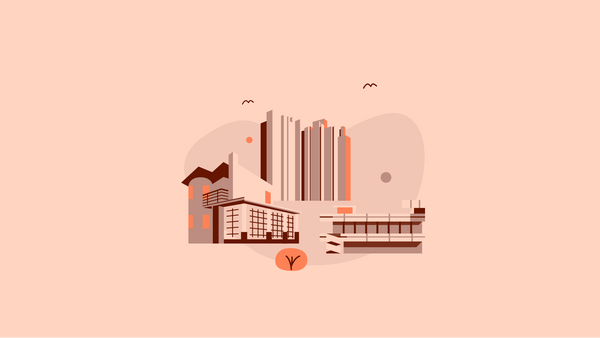
East by KONNTRA | 5 thought-provoking buildings










